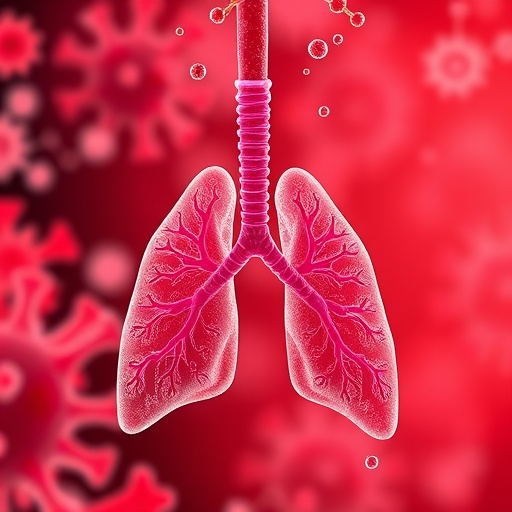Celina police conclude child abuse case against former coach – NBC 5 Dallas-Fort Worth

Report on Institutional Accountability and Child Protection in Celina ISD
Executive Summary
- This report details the findings of the Celina Police Department’s criminal investigation into former Celina ISD teacher and coach, Caleb Elliott, accused of child exploitation.
- The case is analyzed through the framework of the United Nations Sustainable Development Goals (SDGs), with a focus on SDG 16 (Peace, Justice and Strong Institutions), SDG 4 (Quality Education), and SDG 3 (Good Health and Well-being).
- The events highlight a critical failure of institutional mechanisms to protect children, a direct contravention of SDG Target 16.2, which calls for an end to abuse and exploitation of children.
Incident Overview and Law Enforcement Response
- Caleb Elliott, 26, is accused of crimes spanning from spring to fall 2025, involving the exploitation of 38 student-athletes at Moore Middle School.
- Following a report from two students and their parents on October 3, 2025, police arrested Elliott within six hours.
- The Celina Police Department has concluded its investigation, and the case has been forwarded to the Collin County District Attorney’s Office and federal prosecutors for further action.
Charges and Legal Status
- State Charges: Invasive visual recording, possession and promotion of child pornography, and sexual performance of a child.
- Federal Charges: Indicted on eight federal charges of sexual exploitation of children.
- Current Status: Elliott remains in jail pending legal proceedings.
Alignment with Sustainable Development Goal 16: Peace, Justice and Strong Institutions
This case serves as a critical examination of local justice systems and institutional accountability, which are central tenets of SDG 16. The response to these crimes directly measures progress toward building effective, accountable, and inclusive institutions.
- Target 16.2 (End abuse, exploitation… of children): The allegations represent a severe violation of this fundamental human rights target. The subsequent investigation and prosecution are necessary actions to address this failure and provide justice for the 38 victims.
- Target 16.6 (Develop effective, accountable and transparent institutions): Celina ISD is under intense scrutiny for its alleged failure to create an accountable and transparent environment. Allegations that the district knew of prior concerns but did not alert law enforcement represent a significant lapse in institutional responsibility and a failure to uphold this goal.
- Target 16.3 (Promote the rule of law): While the swift police arrest demonstrates a functional response, claims in civil lawsuits suggest prior conduct was not subjected to the rule of law, raising questions about equal access to justice and institutional complicity.
Implications for Sustainable Development Goal 4: Quality Education
A safe and non-violent environment is a prerequisite for quality education as outlined in SDG 4. The exploitation of students within an educational facility fundamentally undermines this goal.
- Target 4.a (Provide safe, non-violent… learning environments): The alleged recording of students in a school locker room constitutes a direct failure to meet this target. This breach of trust compromises the safety of the learning environment for all students.
- Target 4.7 (Education for sustainable development and human rights): The case underscores the critical need for educational systems to actively protect the human rights of children and foster a culture of non-violence and safety, which are essential components of education for sustainable development.
Impact on Sustainable Development Goal 3: Good Health and Well-being
The trauma inflicted upon the victims has severe consequences for their mental and physical well-being, a core concern of SDG 3.
- The alleged crimes directly harmed the well-being of dozens of children, creating lasting psychological and emotional trauma.
- The community’s collective well-being has also been impacted. An effective response must prioritize healing and support for victims and their families, in line with Target 3.4 (Promote mental health and well-being).
Institutional Ramifications and Ongoing Investigations
- Civil Litigation: Multiple civil lawsuits have been filed against both Elliott and Celina ISD. A recent change in Texas law removing school district immunity in cases of sexual misconduct strengthens these legal challenges for institutional accountability.
- Institutional Investigation: Celina ISD has initiated a third-party investigation. The accused’s father, Bill Elliott, and a school principal, Allison Ginnon, remain on administrative leave.
- Calls for Further Scrutiny: Civil attorneys for the victims have criticized the police investigation’s scope, arguing it did not sufficiently examine potential reporting failures by other district employees, and have pledged to use civil depositions to uncover more information.
Analysis of Sustainable Development Goals in the Article
1. Which SDGs are addressed or connected to the issues highlighted in the article?
-
SDG 16: Peace, Justice and Strong Institutions
The article is centered on criminal acts against children, including sexual exploitation and abuse. This directly engages SDG 16, which aims to end abuse, exploitation, and all forms of violence against children and promote the rule of law through effective, accountable, and transparent institutions. The roles of the Celina Police Department, the Collin County District Attorney’s Office, federal prosecutors, and the school district as institutions of justice and governance are central to the narrative.
-
SDG 4: Quality Education
The events described occurred within a school setting (Moore Middle School), perpetrated by a teacher and coach. This connects to SDG 4, which includes providing safe, non-violent, and inclusive learning environments. The article highlights a severe breach of this safety, raising questions about the school district’s policies, accountability, and failure to protect students, as alleged in civil lawsuits.
-
SDG 3: Good Health and Well-being
The abuse and exploitation detailed in the article have profound implications for the physical, mental, and emotional well-being of the 38 student-athlete victims. SDG 3 aims to ensure healthy lives and promote well-being for all. The trauma experienced by the victims and the “toll on the community” mentioned by the police chief directly relate to the goal of promoting mental health and well-being.
2. What specific targets under those SDGs can be identified based on the article’s content?
-
Target 16.2: End abuse, exploitation, trafficking and all forms of violence against and torture of children.
This target is the most direct link to the article’s content. The entire investigation revolves around a former teacher accused of “invasive visual recording, possession and promotion of child pornography, and sexual performance of a child.” The legal actions, including the arrest, state and federal charges, and indictment on “eight federal charges of sexual exploitation of children,” are direct responses to the violations described in this target.
-
Target 4.a: Build and upgrade education facilities that are child, disability and gender sensitive and provide safe, non-violent, inclusive and effective learning environments for all.
The article implies a failure to meet this target. The abuse took place in a school locker room, a space that was not safe for the students. The civil lawsuits allege that the district was previously aware of misconduct but failed to act, suggesting a systemic failure in creating a “safe, non-violent” learning environment. The placement of the principal and athletic director on administrative leave points to an institutional review of safety protocols.
-
Target 3.4: By 2030, reduce by one third premature mortality from non-communicable diseases through prevention and treatment and promote mental health and well-being.
While not explicitly about treatment, the article implies the severe negative impact on the mental health of the victims. The police chief’s acknowledgment of the “toll on the community” and his praise for the “remarkable bravery” of the victims and their families highlight the significant psychological trauma involved. Addressing this trauma is a core component of promoting mental health and well-being.
3. Are there any indicators mentioned or implied in the article that can be used to measure progress towards the identified targets?
-
Indicators for Target 16.2
The article provides several data points that can serve as indicators:
- Number of victims: The article explicitly states that the crimes “involved 38 student-athletes,” which serves as a direct measure of the scale of abuse (related to Indicator 16.2.1: Proportion of children aged 1-17 years who experienced any physical punishment and/or psychological aggression by caregivers in the past month).
- Legal and justice system response: The arrest of the suspect, the filing of “state and federal charges,” and the “indictment on eight federal charges” are indicators of the justice system’s action to hold perpetrators accountable. The ongoing investigations by multiple law enforcement agencies also measure the institutional response.
- Reporting mechanisms: The article highlights a failure in reporting, noting that “no one from Celina ISD alerted law enforcement when concerns about Caleb Elliott surfaced in prior years.” The fact that the investigation only began when “two boys and their parents reported” the incident directly to the police points to the effectiveness (or lack thereof) of institutional reporting channels.
-
Indicators for Target 4.a
The article implies indicators related to school safety:
- Incidence of abuse in schools: The case itself, involving a teacher preying on students within a school facility, is an indicator of an unsafe learning environment.
- Institutional accountability: The placement of the school principal and athletic director on administrative leave, the launch of a “third-party investigation by the district,” and the civil lawsuits against Celina ISD are all measures of accountability being sought for the failure to provide a safe environment.
- Policy changes: The mention that “Texas school districts are no longer immune from liability in cases involving sexual misconduct by employees” points to a legislative change that serves as an indicator of stronger governance to protect students.
-
Indicators for Target 3.4
The article implies the need for indicators related to mental health support:
- Community impact: The police chief’s statement that “events like these may refine a community but do not define a community” and his acknowledgment of the “toll on the community” imply a need to measure the collective psychological impact and the community’s resilience.
- Support for victims: While not detailed, the chief’s “deepest and most heartfelt gratitude to the victims and their families” for their “remarkable bravery” implicitly points to the need for psychosocial support systems to help them cope with the trauma, which could be a measurable indicator of progress.
4. Summary Table of SDGs, Targets, and Indicators
| SDGs | Targets | Indicators |
|---|---|---|
| SDG 16: Peace, Justice and Strong Institutions | 16.2: End abuse, exploitation, trafficking and all forms of violence against and torture of children. |
|
| SDG 4: Quality Education | 4.a: Build and upgrade education facilities… and provide safe, non-violent, inclusive and effective learning environments for all. |
|
| SDG 3: Good Health and Well-being | 3.4: …promote mental health and well-being. |
|
Source: nbcdfw.com
What is Your Reaction?
 Like
0
Like
0
 Dislike
0
Dislike
0
 Love
0
Love
0
 Funny
0
Funny
0
 Angry
0
Angry
0
 Sad
0
Sad
0
 Wow
0
Wow
0
















































:focal(1500,1000)/https://media.globalcitizen.org/a6/9a/a69a4720-d8a1-4715-b596-18738d03c05c/rotary_polio_hero_image.jpg?#)







/countries/sri-lanka/photo-credit---dmc-sri-lanka.tmb-1200v.jpg?sfvrsn=dc298bcc_1#)


















